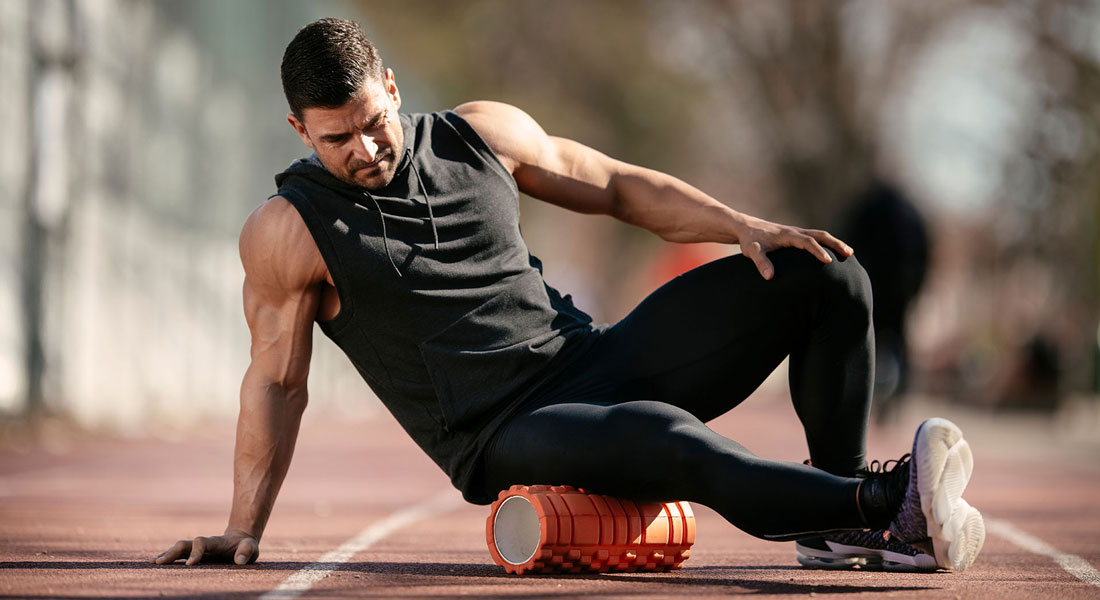Knee injuries are one of the most common causes of “ex-athletes.” Why? Though your ankles and hips are crucial too, activities like changing direction at speed are impossible to execute without strong and stable knees.
Enter: the foam roller. It’s hardly high tech but this humble piece of gym equipment could solve more popliteal problems than you know. Use it right, and foam rolling, as part of a balanced exercise and maintenance plan, can keep your knees younger than most athletes (or gym bros) your age.
While we can’t all recover from catastrophic knee injuries like Zlatan Ibrahimovic or Tom Brady, if you do the preventative work, you can reduce your chances of sustaining them. This is where we turn to tools like foam rollers, which can help you reduce stress and strain that pulls your knee out of alignment.
Muscle Engineered, an Instagram account which teaches people about training based on scientific research and evidence, recently took to the internet with a post along those very lines, giving tips on how to keep your knees top.
Key points? “Foam rolling the outside of your thigh (iliotibial band AKA ITB) is typically done to gain more range of motion, & reduce pain at the knee (particularly “runners knee”),” Muscle Engineered tells us.
However: you shouldn’t just roll your ITB (as many people do as a cursory move at the end of a training session), you should work on your glutes too: “a 2018 study found foam rolling over the IT band did not show any immediate changes in range of motion. But, by foam rolling the gluteal muscle, it showed significant increase in hip adduction (increased range of motion).”
That’s not to say you shouldn’t roll your ITB: as it’s fascia, rather than a normal muscle that can be stretched via normal means, foam rolling is an excellent way to release your ITB and reduce the load on your knee.
“The IT band is a thickening of the fascia on the outside of the thigh. It doesn’t have much elastic properties. By instead foam rolling the muscles that attach and pull on the IT band which make it tight, this will help release the tension on the IT band.”⠀
What it is to say, is that it’s not a bad idea to roll your glutes too. It’s also worth remembering, as Muscle Engineered points out, to take this as a suggestion and not as gospel (as with any one-off study), and only implement it if you find it works for you.
“There is definitely more research needed before drawing conclusions as with anything… This study was short term and used a healthy population so it can’t be directly applied to someone who is injured or has knee pain.”
